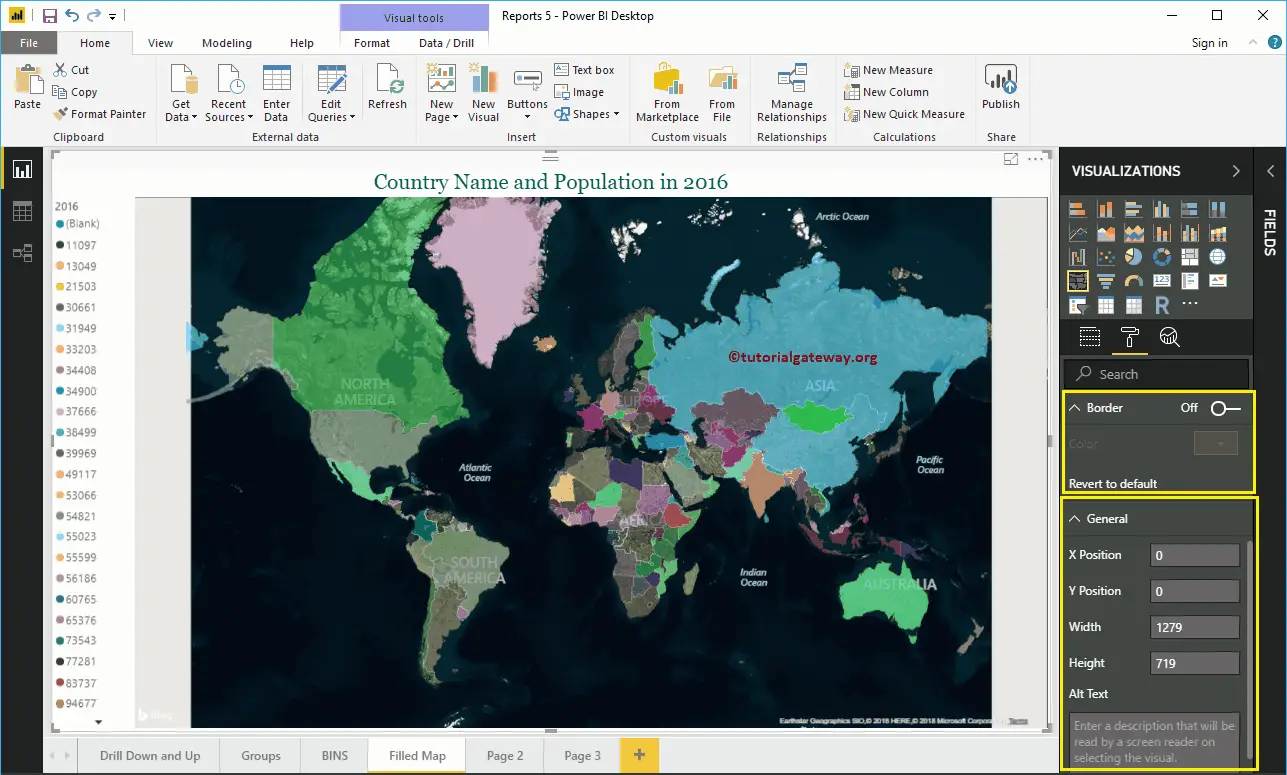Power BI Filled Maps fill the Map with colors based on the geological data that you provide. Let me show you how to Create a Filled Map with an example.
For this Power BI Filled Map demonstration, we are going to use the World Population data that we downloaded from the Data bank (in Excel format).
Please refer Connect to the Excel article to understand the Power BI steps involved in working with Excel.
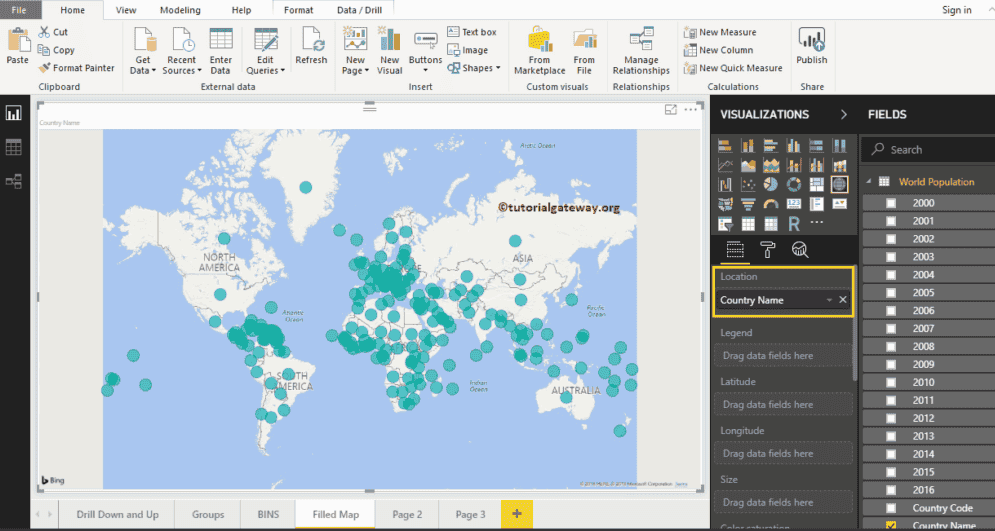
How to Create a Filled Map in Power BI
Dragging any geographical data to the Canvas region will automatically create a Map for you. First, let me drag the Country Names from the world Population table to the Canvas.
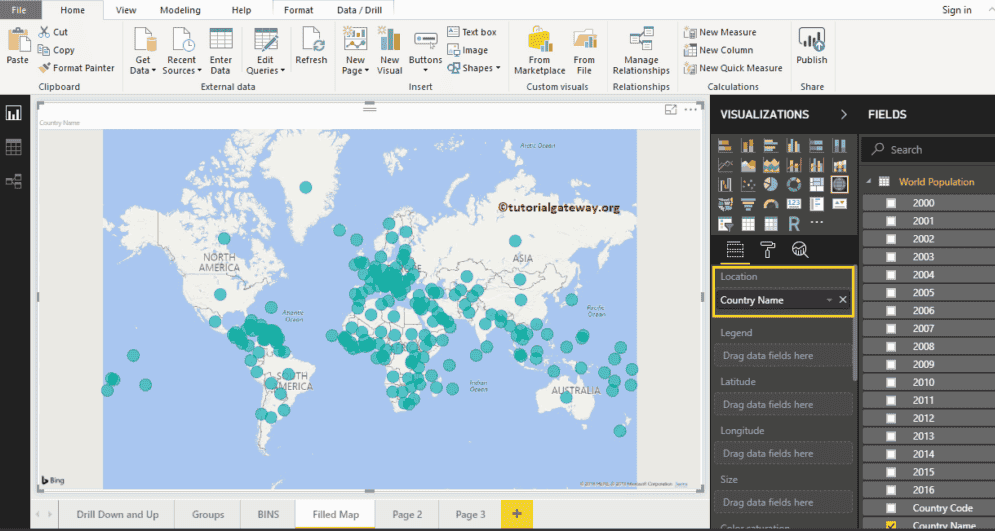
Click on the Filled Map under the Visualization section. It converts a Map into a Filled Map.
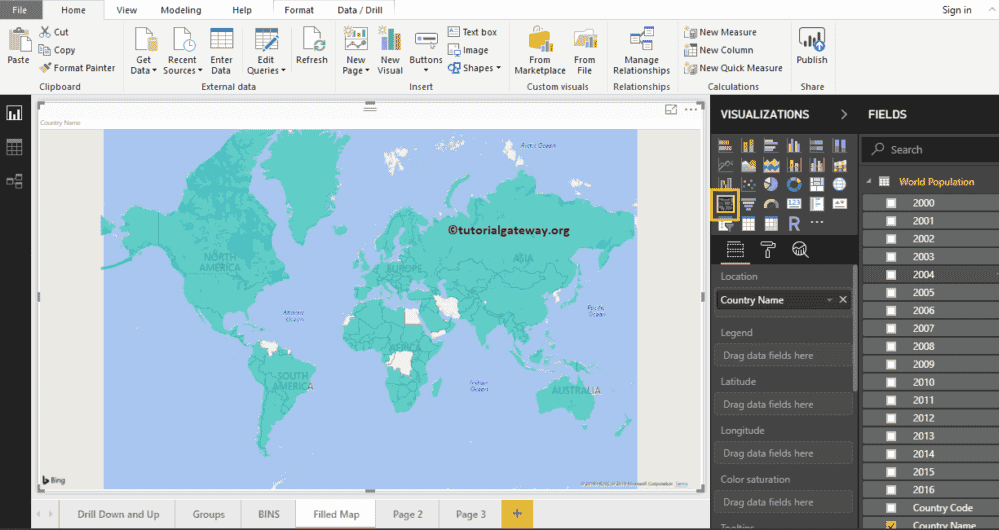
Next, Drag and Drop the 2016 Population from the Fields section to the Legend region.
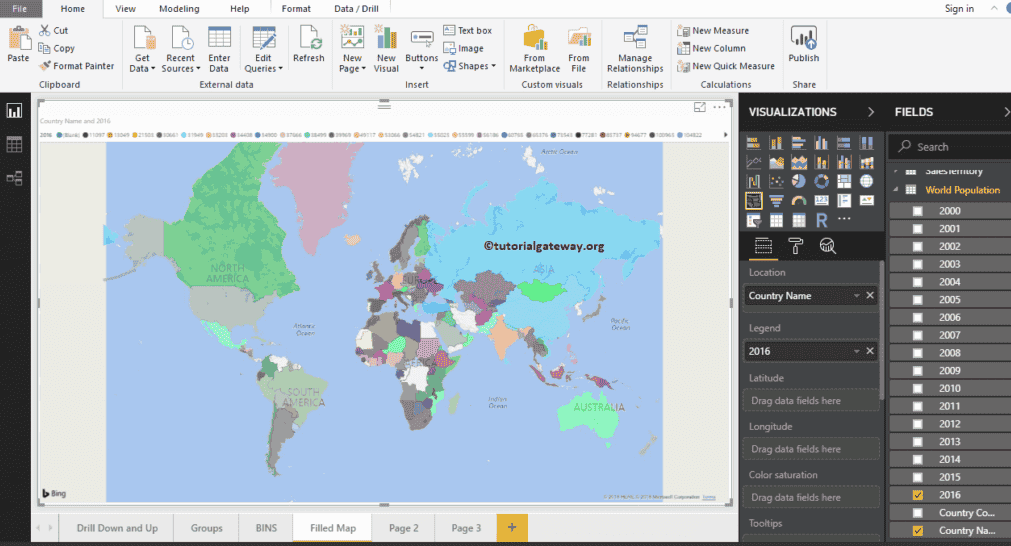
From the above screenshot, you can see the filled map that represents the country-wise population in the year 2016
Create a Filled Map in Power BI Approach 2
First, click on the filled Map under the Visualization section. It automatically creates a filled Map with dummy data, as shown in the screenshot below.
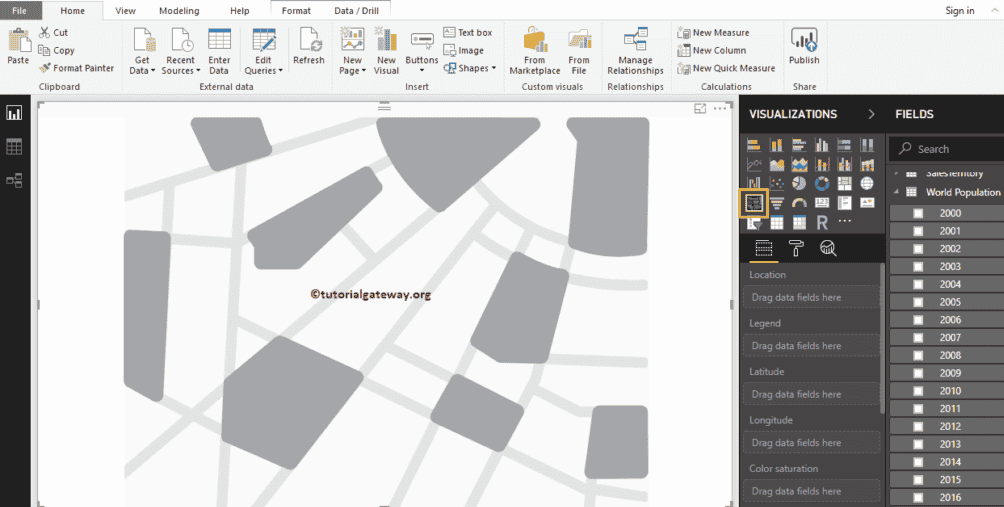
To add data to a Power BI filled Map, we have to add the required fields:
- Location: Please specify the Geological Column that represents the Bubbles.
- Legend: Specify the Column that sub-divides the Location data. Something like Territory, Country, Region, or Continent
- Latitude and Longitude: If your data has latitude and longitude information, you can use them to get the exact location.
- Size: Specify the Column that represents the Bubbles size.
- Color Saturation: Any Numeric value that decides the color of the bubble.
Let me drag the country name from the Fields section to the Location Section. You can do this by dragging the country name to the Location section or simply checkmark the country name column.
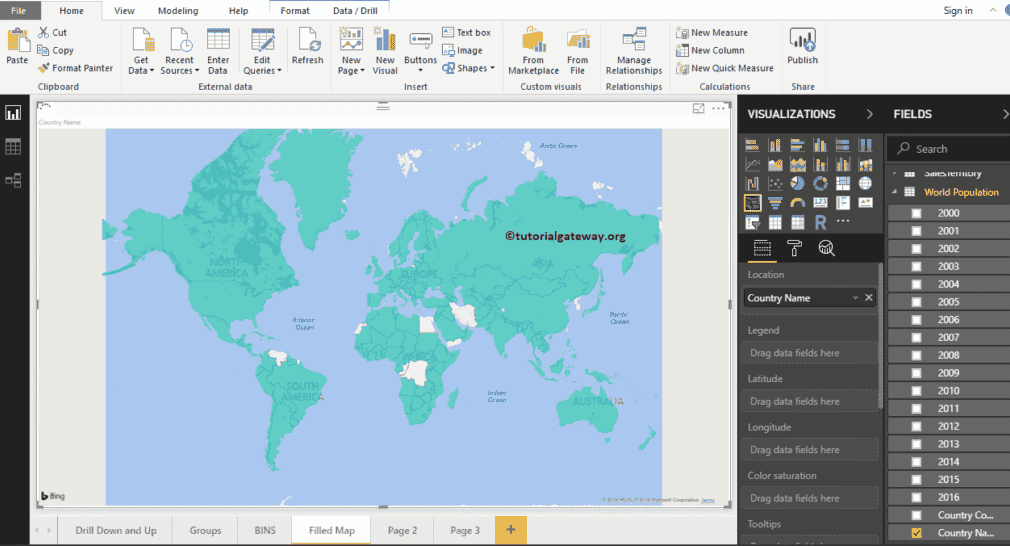
Next, let me add the 2016 population to the legend section. Now you see the filled map.
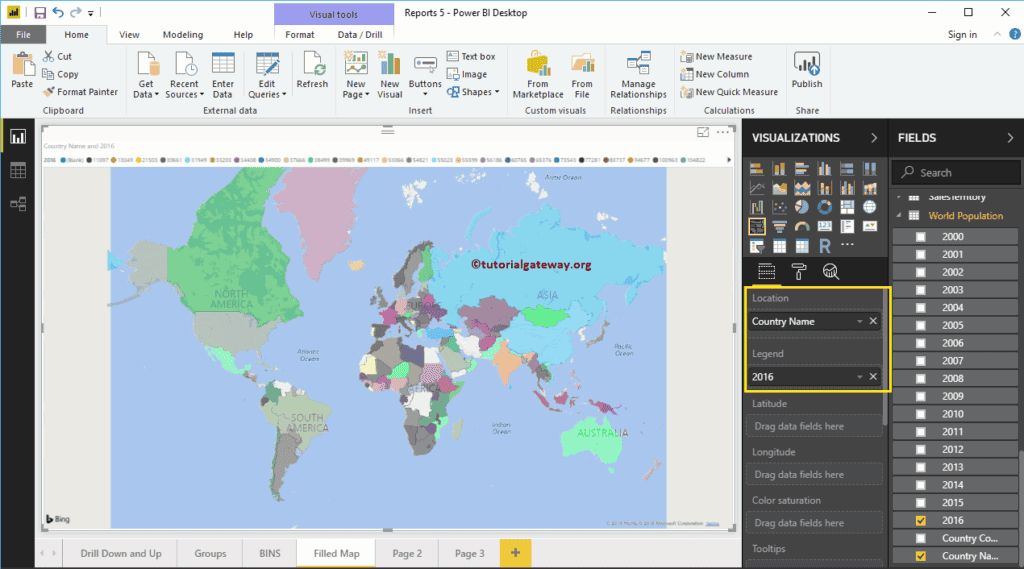
Let me do some quick formatting to this filled Map. I suggest you refer to the Format Filled Maps section to understand the formatting options.
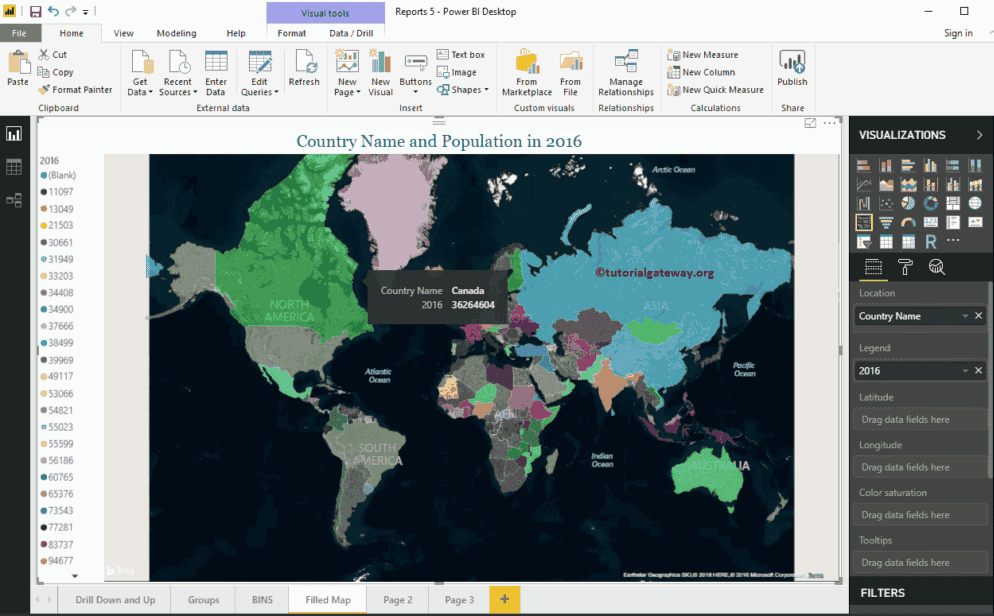
Hover over any region to see the country’s name and population.
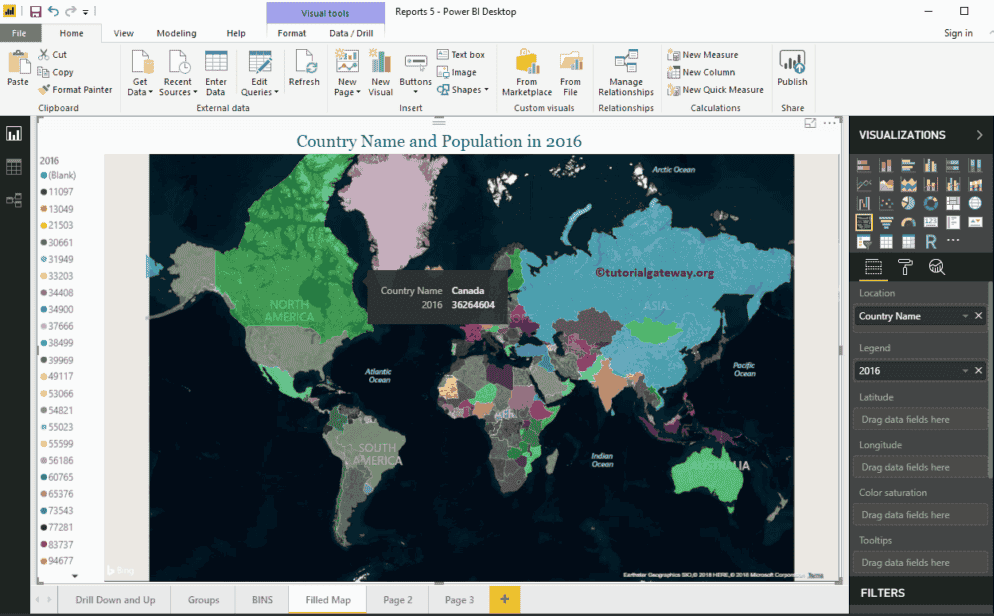
Format Power BI Filled Map
How to Format Power BI Filled Map with an Example? Formatting the Filled Map includes changing the Map Color, Title text, Title position, background color, etc.
To demonstrate these filled Map formatting options, we will use the filled Map that we created earlier. Please click the Format button to see the available formatting options for this Power BI filled map.
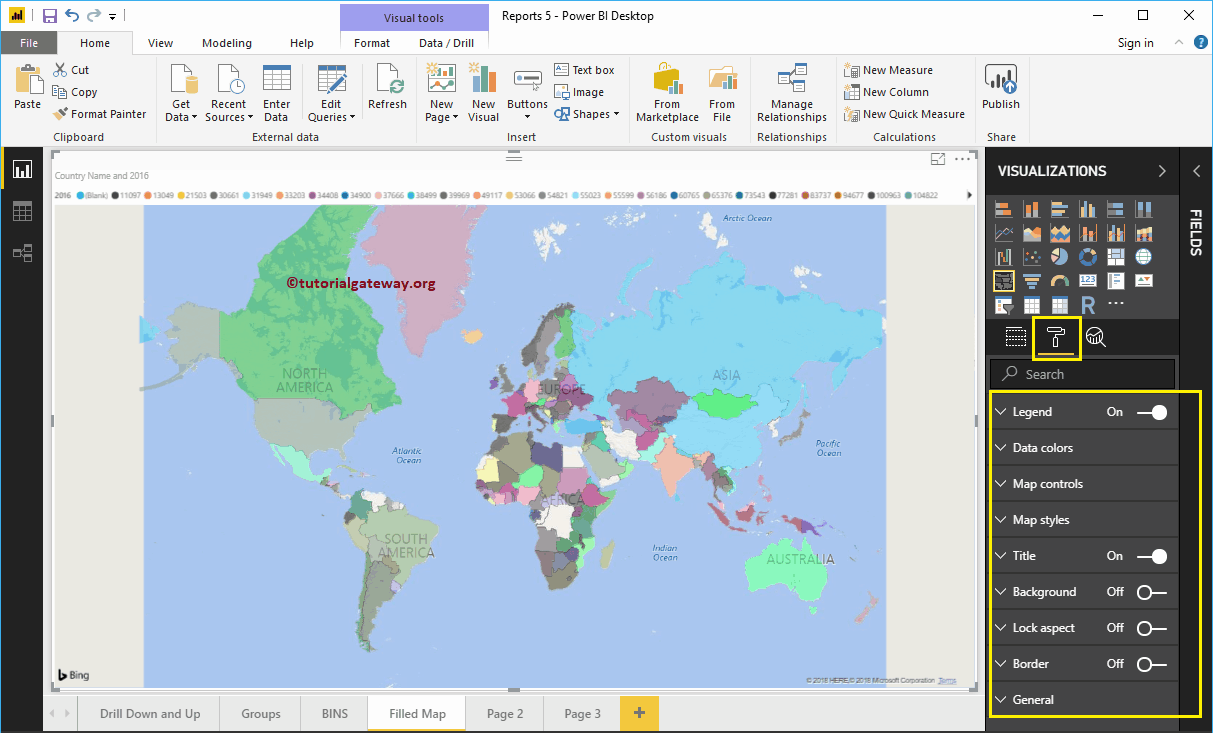
Format Legend of a filled Map in Power BI
As you can see from the screenshot below, we used the Position drop-down box to change the legend position to Left. Next, we changed the legend text size to 11.
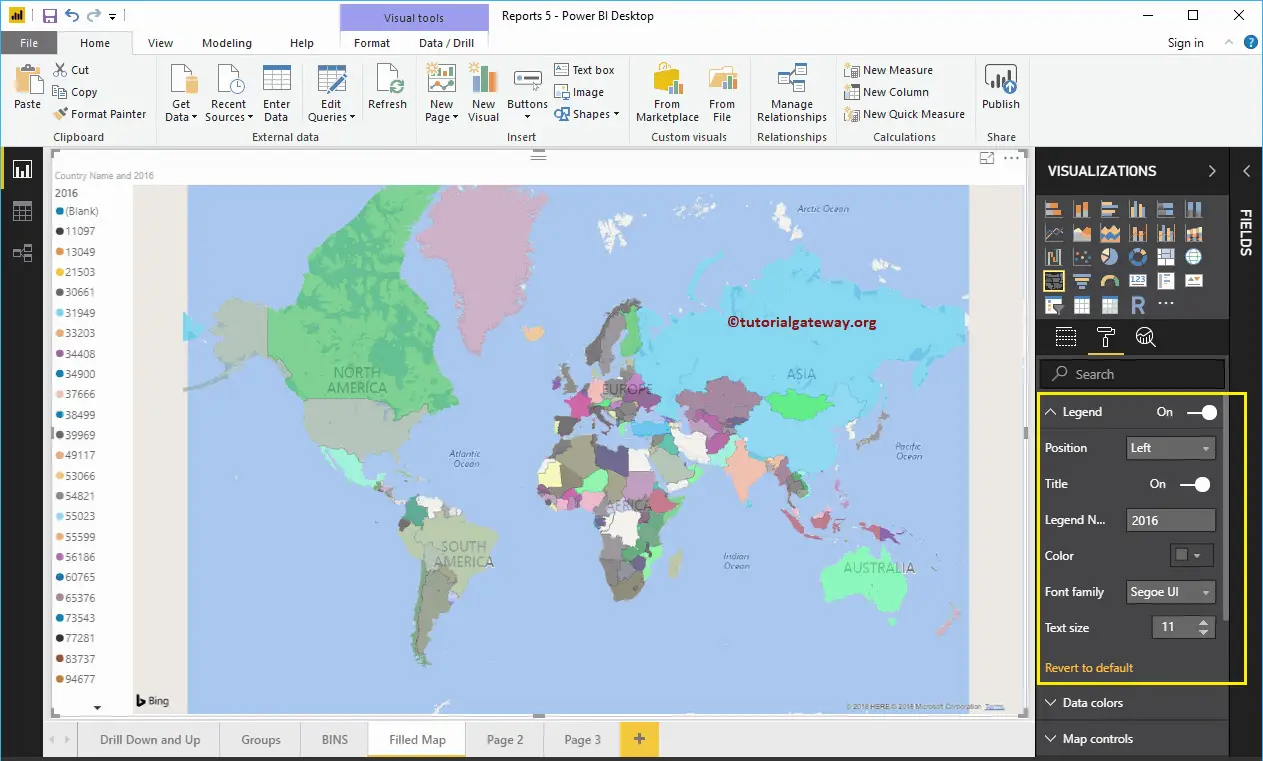
Format Filled Map Data Colors
Use this Data Colors section to change the color of each and every individual area (here, it is the country).
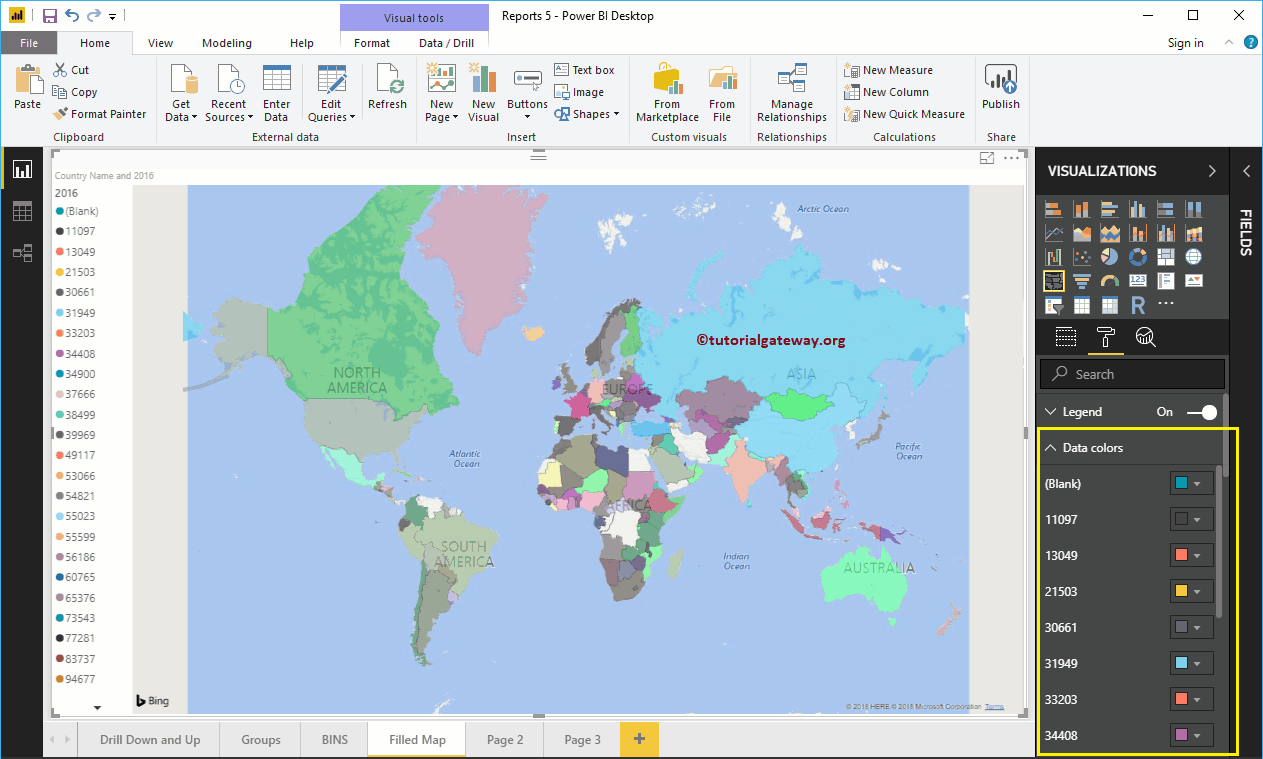
Map Control
By default, the auto zoom option is enabled in this filled map. However, you can disable it by toggling the Auto Zoom option from on to off.
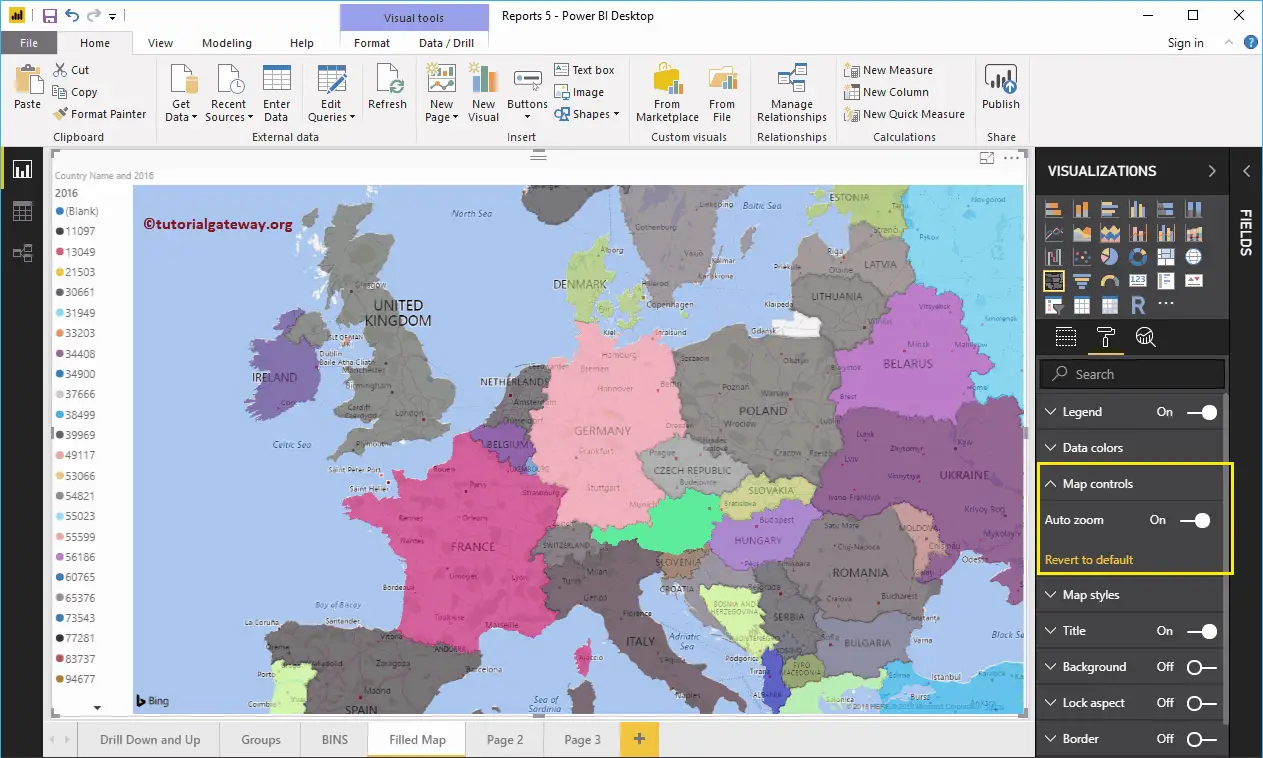
Format Map Style of a Filed Map
Use this section to change the look or theme of a map.
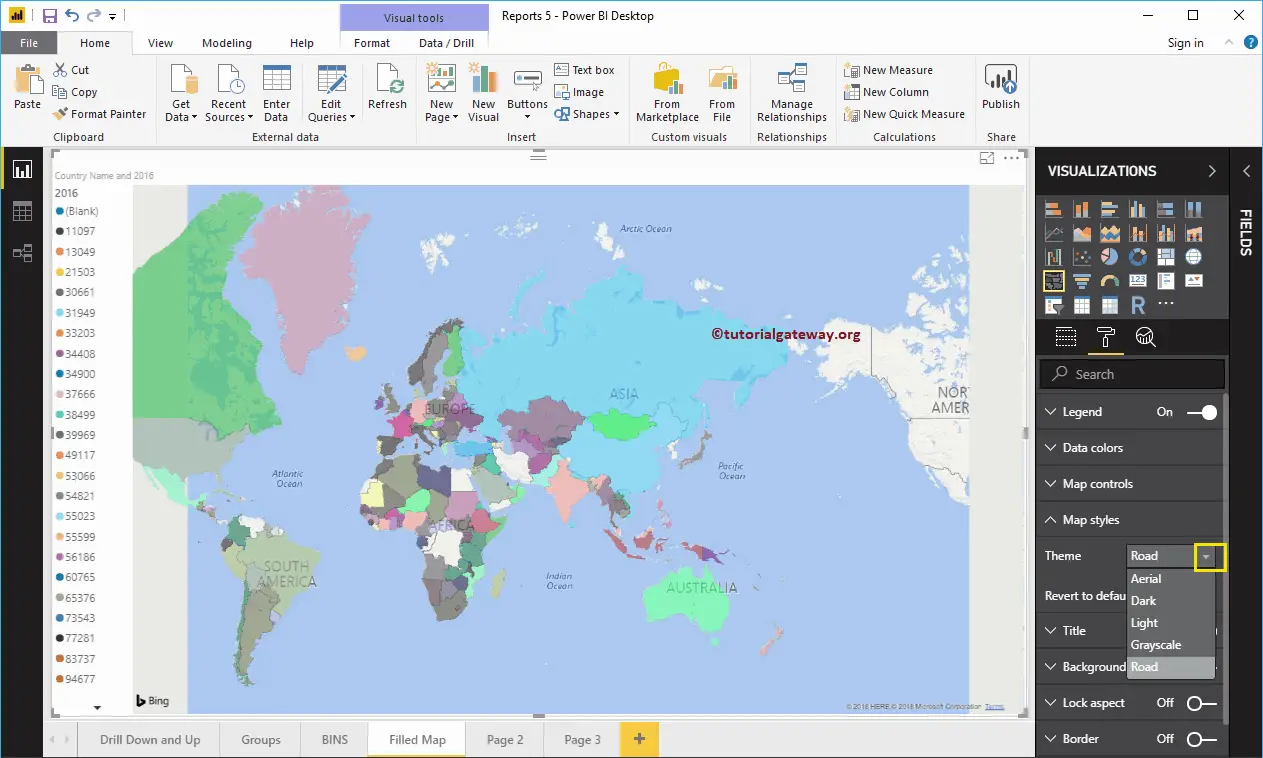
Let me select the Aerial Theme.
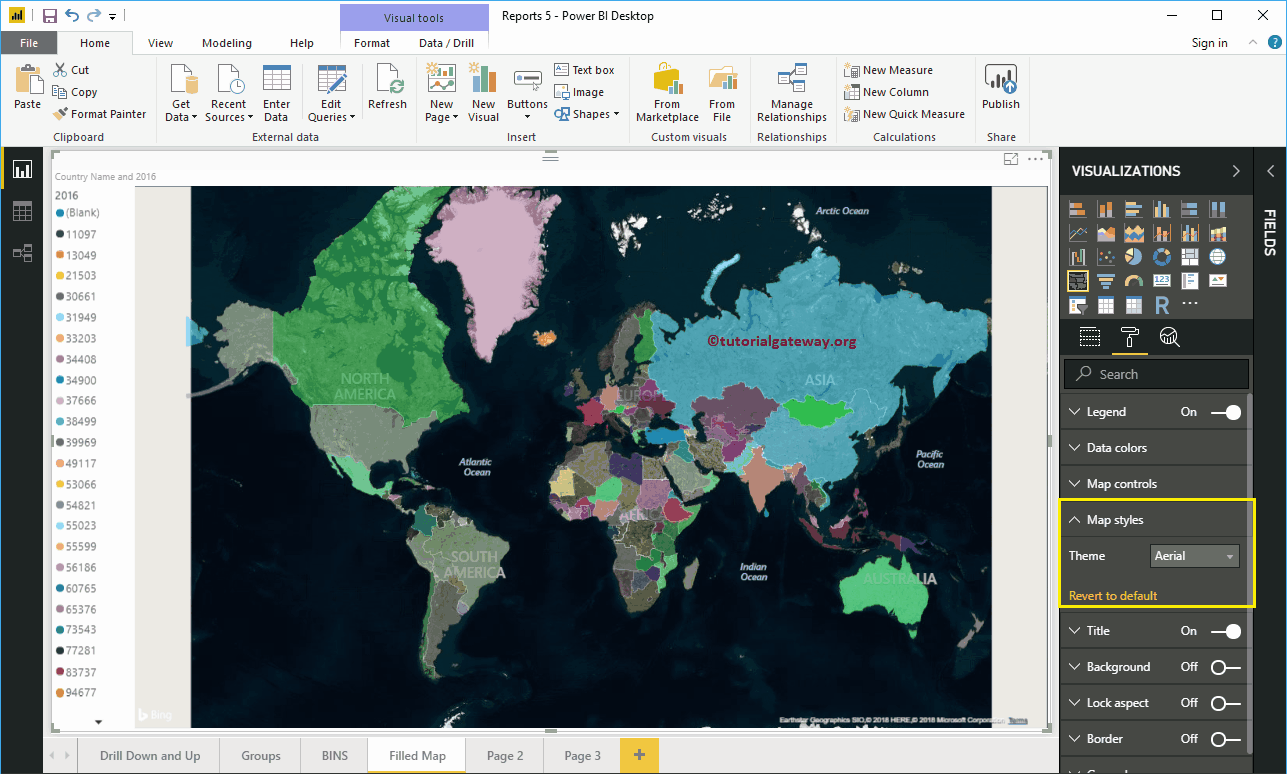
Format Title of a Filled Map
You can disable the filled Map title by toggling the Title option from On to Off.
From the screenshot below, we change the Font Color to Green, Text Size to 20, the Title Alignment to the center, and Font Family to Georgia. If you want, you can also add the background color to the title.
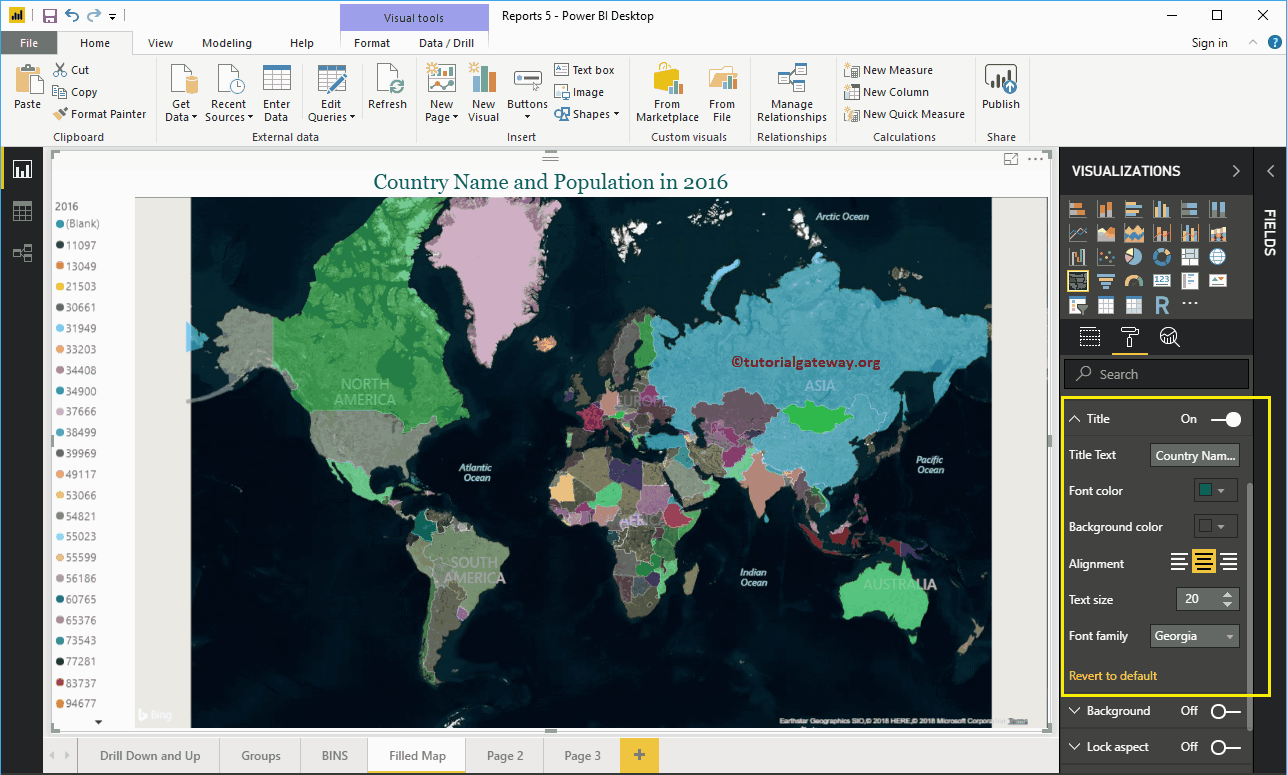
Format Background Color of a Filled Map in Power BI
You can add the Background color to a filled Map by toggling the Background option to On. For the demonstration purpose, we added yellow color with 17% transparency.
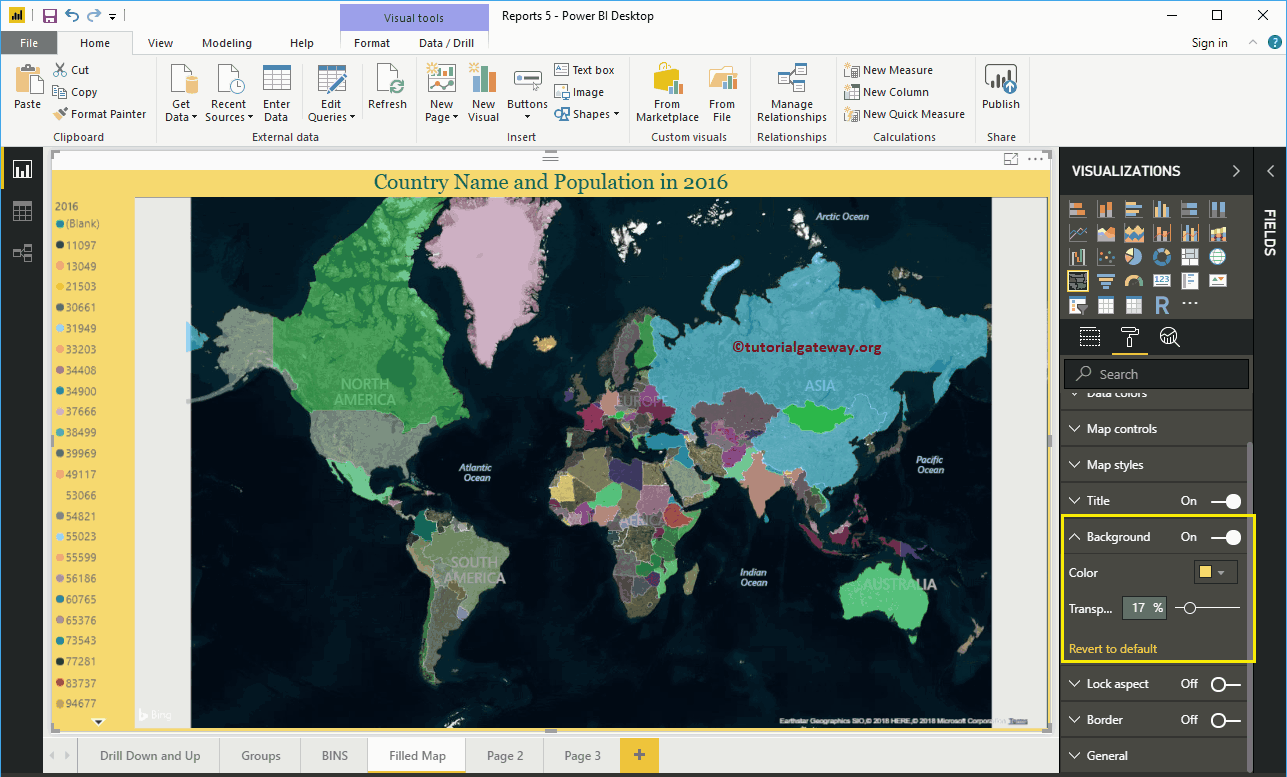
Format Borders and General settings
You can add Borders to a filled Map by toggling the Border option from Off to On. Similarly, use this General Section to Change the filled map X, Y position, Width, and height.
